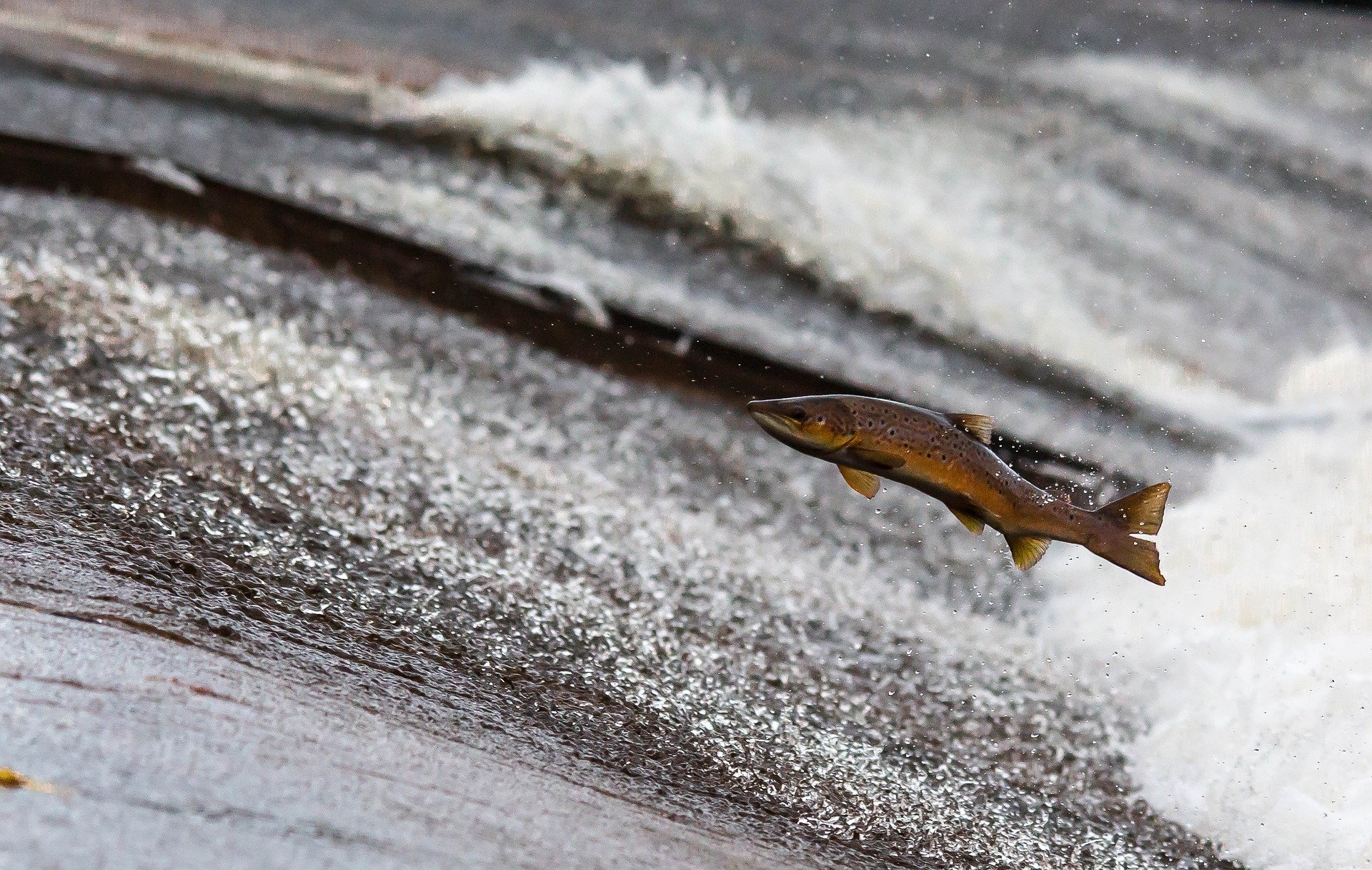
Chile's Growing Salmon Industry Faces Environmental and Sanitary Issues Amid Market Concentration
Myriam Hammadi
January 6th, 2023
Chile’s salmon sector has exploded over the last decades, but all the benefits are now at risk because of the management of this industry.
What is the problem?
Chile is the second largest salmon producer in the world, after Norway. Most of the Chilean salmon – 95% - is exported for consumption abroad: the majority of these exports – about 81% - goes to the United States, Japan, Brazil, Russia, and China (see Figure 1 Informe de archivo sobre investigación en la industria salmonera, 2022. Par 44).
Figure 1: Exports of Chilean salmon and trout by market in 2021
Southern Chile has seen significant growth in its salmon industry, which not only contributes greatly to regional employment, but also provides employment opportunities for a significant number of women and young people.
There is also evidence that salmon farms have a significant impact on reducing poverty in rural Chile. (Ceballos, Dresdner-Cid, Quiroga-Suazo 2018).
Despite this success, the Chilean salmon industry faces a number of sanitary, labor (high levels of occupational accidents and deaths, low salaries), and environmental problems, notably the infamous virus outbreak in 2007 – the Infectious Salmon Anemia (ISA) virus – which wiped out the salmon production that year and put more than 15 000 persons out of work. In response to this outbreak, the government put in place a moratorium, banning new aquaculture concessions, from 2010 onwards, in order to reorganize the activity spatially against the overcrowding of salmon concessions.
In 2020, this moratorium was extended. Between 2018 and 2019, the government also introduced new pieces of regulations targeting the density of salmon farms based on their level of biosecurity (no. of deaths, cause of death, no. of escapes, etc.). The reason for them was disease control, since "the more fish (volume) exists by rafts cages, the more they are stressed, creating favorable conditions for disease or epidemic outbreaks to appear" (Ley N° 20.434 - Historia de la ley).
Figure 2: Major causes of death of salmon in Chile, 2020 - 2021
However, more recently, environmental factors have emerged as an even more serious cause of death in the salmon industry (see Figure 2). According to statistics from the Chilean National Fisheries and Aquaculture Service, the main cause of death of salmon in Chile in 2021 was environmental, followed by infectious disease. Between 2020 and 2021 the number of deaths from environmental causes doubled from 13 to 26 percent. To date, no measures have yet been taken by the Chilean authorities to address these environmental problems.
The environmental causes abovementioned refer to, based on official data, low levels of oxygen and algae blooms (Boletín ambiental, Sernapesca 2020).
Lastly, in the past 30 years the salmon industry is becoming more concentrated, with a series of mergers and acquisition, and increasing dominance of big and historical players. Data from Chile’s National Economic Prosecutor on mergers and acquisitions of the salmon industry in Chile shows that in the last 10 years, at least 10 M&A operations took place, which shows a general trend to more concentration in this market. This has changed the dynamic of the sector from 30 operators to 10 operators (Mowi Salmon Handbook 2021, p.49).
How has the government responded?
The government’s response to the crisis in the salmon industry has been to put in place two new measures: a moratorium on new entrants, and a law regulating the density of salmon farms. Both measures are designed to address the sanitary problems in the sector. No measures have yet been taken to address the growing concentration, nor the environmental problems.
In January 2019, the two measures were the subject of a complaint by an individual to Chile’s National Economic Prosecutor (Fiscalía Nacional Económica) on the grounds that they would affect competition in this market. According to this complaint, the moratorium would not allow new economic players to enter the market, which would constitute a barrier to entry. On the other hand, the creation of new density regimes for salmon farms would favor historical players, to the detriment of newer or smaller players.
Following this complaint, the Prosecutor’s office conducted an investigation that ended in April 2022, concluding that these regulatory changes were not anti-competitive. In one report, the prosecutor’s office acknowledges the risks to competition but finds that these risks are offset because the two regulations were for public policy purposes, notably, to address the sanitary problems in the sector. In another report, the prosecutor’s office finds that the market is not concentrated but nuances this saying “in recent years there have been a series of mergers in the industry that have generated, as a whole, a gradual trend towards concentration, which could affect this statement in the future” (Informe de archivo sobre investigación en la industria salmonera. 2022 Par.49).
At the same time, the two regulations in place do not show any sign of substantial improvement in the sanitary problems affecting the salmon industry. There is no significant drop in deaths of salmon due to infectious causes (see Figure 2). For example, there was a new virus outbreak in 2021 in the region of Aysén.
Beyond that, the big forgotten part of this whole equation is the environment.
The government’s neglect of the environmental destruction of the salmon industry
Today, environmental factors are the major cause of death in the Chilean salmon industry. In 2021, nearly 5,600 tons of salmon died as a result of toxic algal blooms, the major environmental factor that explains the 26.3% of salmon deaths due to environmental causes (see Figure 2).
The Chilean salmon industry has been singled out as the most prevalent cause of water-related natural disasters - notably the 2016 red tide caused by microalgae. These microalgae are directly linked to the intensification of salmon farming, which contributes to the eutrophication of waters (defined as the excessive nutrient enrichment of an aquatic ecosystem).
If we add up the sanitary and environmental causes of salmon deaths (37.5% in 2020, 48.9% in 2021, see Figure 2), we can clearly identify a substantial, almost exponential, degradation of salmon stocks. The very survival of the industry is threatened by these problems.
What needs to be done?
The economic success of the salmon industry is becoming its downfall as sanitary problems, environmental degradation, and anti-competitive practices take hold. Two things need to happen to improve the situation.
First, we need to change course and promote more competition to enable and reward innovation that can help address the sanitary and environmental problems. Effective competition would generate benefits for consumers, such as low prices, better quality products, and innovation. It is through better innovation that we can find solutions, not only to improve the products, but in this case, find new production methods that are less environmentally damaging, and that promote better sanitary conditions. Competition in the marketplace is also beneficial for workers, as it creates more high-quality jobs and the economic freedom to switch jobs or negotiate a higher wage and better working conditions.
Chile should also invest in a reform of competition law that is no longer based on the old European concentration standards. It should move to a framework that anticipates the potential harm to major players rather than waiting for future market developments. Similar initiatives towards this approach are currently under discussion as the EU seeks to overhaul its competition law and policy framework – see the Digital Markets Act.
The current Chilean regime, and the two sanitary regulations put in place, do not encourage more sustainable production and innovation. Preserving natural capital is essential for this industry to maintain its growth levels. There are solutions, in which Chile can invest, particularly in solutions based on nature, to limit the eutrophication of waters, by diversifying the salmon industry and introducing other fish or aquatic species.
The Chilean government is currently working on a new general law on aquaculture (Nueva Ley General de Acuicultura), scheduled to be presented in the fourth quarter of 2023.
Chile has to seize this opportunity and reframe the current regulatory landscape if it is to have any chance of saving this industry.
References:
AquaChile website https://es.aquachile.com/Salmon Chile website https://www.salmonchile.cl/Fiscalia Nacional Economica de Chile https://www.fne.gob.cl/Sanitary report with fresh water and sea sanitary information for 2021 (January-November) Animal Health Department, Aquaculture sub-directorate, Chilean National Fisheries, and Aquaculture Service. December 2021Executive Vice-President Vestager’s keynote speech at the 25th IBA Competition Conference, delivered by Inge Bernaerts, Director, DG Competition.Buschmann Alejandro. 2005. Marea Roja y Salmonicultura en el Sur de Chile. Oceana.Ceballos A., Dresdner-Cid J.D., Quiroga-Suazo M.A., Does the location of salmon farms contribute to the reduction of poverty in remote coastal areas? An impact assessment using a Chilean case study, Food Policy, Volume 75, 2018, Pages 68-79, ISSN 0306-9192, https://doi.org/10.1016/j.foodpol.2018.01.009.Durán S. Gonzalo, Kremerman Marco. "Informe Industria Salmonera". December 2007. DOI: 10.13140/RG.2.2.18375.98726. Project: Estudios SectorialesGenoux Flora. 2022. "Au Chili, la folle croissance de l’industrie du saumon, visée pour ses conséquences sur l’environnement". Le Monde. October 7, 2022. Accessed January 6, 2023.Grandadam Sabine. 2016. "Macabre marée rouge au large des côtes chiliennes". Courrier International. May 13, 2016. Accessed January 6, 2023.Léveillé Jean-Thomas, Mongeau-Birkett Sarah. 2022. "Les dérives de l’industrie milliardaire du saumon d’élevage". La presse. October 10th, 2022. Accessed January 6, 2023."Los diez gigantes de la industria de salmón manejan el 65% de la producción de salmón y trucha en Chile". MundoMaritimo. May 9th 2003. Accessed January 6, 2023."AquaChile incrementó ingresos en 2021 pese a baja en volumen vendido". Aqua. April 1st, 2022. Accessed January 6, 2023.Schinkel Maarten Pieter, Treuren Leonard. Green Antitrust: (More) friendly fire in the fight against climate change. https://ssrn.com/abstract=3749147Soto Doris, Jara Fernando, Moreno Carlos. Escaped salmon in the inner seas, Southern Chile: Facing ecological and social conflicts. First published: 01 December 2001Salmon Farming Industry Handbook 2021 https://corpsite.azureedge.net/corpsite/wp-content/uploads/2021/05/Salmon-Industry-Handbook-2021.pdfInforme trimestral de Exportaciones de Salmón Primer trimestre de 2022 https://www.consejodelsalmon.cl/wp-content/uploads/2022/04/080422-Reporte-exportaciones-salmon-I-trim-22-vf.pdf
